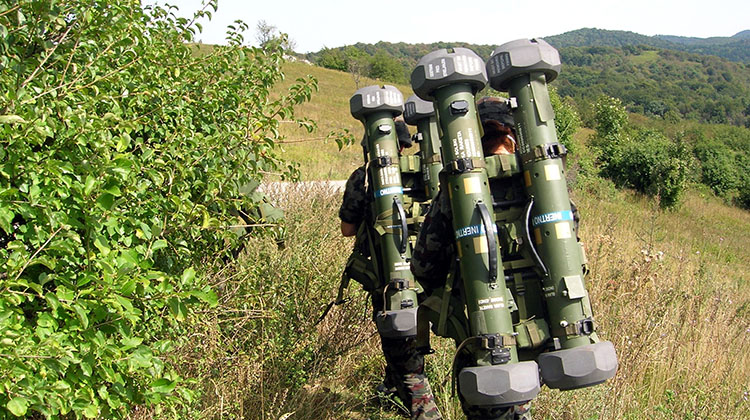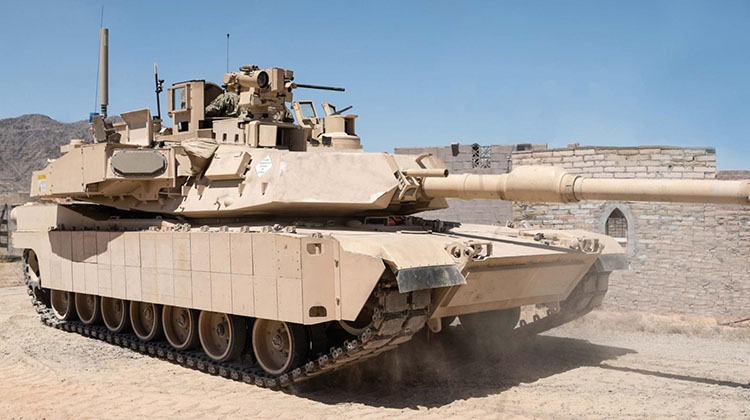
Rafael’s Spike LR2, the latest version of the widely used Spike series of ATGMs has been chosen for the Australian Army. (Rafael)
Israeli defence company Rafael and its Australian joint venture partner Varley are set to pitch some of the world’s most advanced technology to the Australian Defence Force.
Included in a lengthy list currently in operation with or being adopted by the Israeli Defence Force (IDF), is the Trophy MV active protection system for the Abrams tanks and other combat vehicles, and the Fire Weaver networked targeting control system.
The latest offerings follow the success of Rafael and Varley in the contest to provide a new anti-tank guided missile (ATGM) for the new Rheinmetall Boxer Combat Reconnaissance Vehicles (CRVs) being acquired under Project LAND 400 Phase 2.
Rafael’s Spike LR2, the latest version of the widely used Spike series of ATGMs, was chosen over the European MBDA MMP – the successor to the widely used Milan – which is now entering service with the French Army.
In late August, then Defence Industry Minister Christopher Pyne confirmed Spike had been chosen for the Australian Army. Announced at the same time was the new joint venture Varley Rafael Australia Systems (VRA) which will manufacture Spike in Australia.
But Spike is just the start. “We are here to stay. From our point of view, it is a strategic step,” Rafael president and chief executive officer Major General Yoav Har-Even (ret) told ADBR when he visited Australia for the launch.
“It is not something we are doing only for LAND 400. The moment that we start operating and producing, the sky is the limit. It is only a question of what will be the operational requirement.”
Varley chairman Jeff Phillips said no ATGM had been built in Australia since 1952. That was Malkara, a 1st generation wire-guided missile jointly developed with the UK but never adopted into Australian service. It was speedily superseded.
“We are building an indigenous capability in Australia that doesn’t currently exist,” Phillips said. “We are here for the long haul. We are not here for one project or one product. Rafael’s technology gives us access to be able to bid and compete on quite a few projects coming up in the near term. There are those coming up in the medium term.”
More than 30,000 Spike missiles have been produced by Rafael in Israel and by joint-venture partners around the world. That makes it one of the most prolific modern ATGMs. And there is a Spike user club which meets every two years to discuss use of the missile, training support and upgrades.
Under the joint venture deal, Rafael will provide Australia with a full Spike engineering data pack to enable local production. That will require a skilled workforce plus suppliers.
“The skillsets we are looking at are professional engineers and technicians,” said VRA chief executive officer Jacob Blitman. “We will be looking at people from the former automotive industry in terms of quality assurance.
“We are also looking at people who are ex-Defence with the technical skills to support introduction to service, in-service through life support, integrated logistics support. It is all going to be Australian.”
After LAND 400 Phase 2 comes LAND 400 Phase 3 – infantry fighting vehicles, LAND 4108 – direct fire support weapons, LAND 1508 – special forces capability, and LAND 9000 Phase 3 – Tiger helicopter upgrade or replacement, all with a requirement for a 5th generation ATGM.
Rafael’s Trophy active protection system employs a 360 degree radar mounted on the vehicle which detects incoming rockets and missiles and destroys them with blasts of pellets fired from an on-vehicle projector.
The IDF has fielded more than 1,000 Trophy systems and these have proven effective against even the latest Soviet RPG and ATGM systems.
Trophy was initially designed for IDF Merkava main battle tanks, making it suitable for Australia’s Abrams M1A1 tanks which are set to be upgraded under Project LAND 907 Phase 2. Rafael has also developed Trophy MV for smaller armoured vehicles, which could make it of interest for the LAND 400 vehicles.
Should the Australian Army adopt Trophy, this too would be supplied and supported by VRA.
Also of possible interest is Fire Weaver, an advanced target acquisition and precision engagement now being fielded by the IDF.
General Har-Even said this wasn’t a replacement for a battle management system (BMS). For the Australian Army that’s actually an Israeli Elbit system.
Instead, Fire Weaver connects all sensors and effectors, allowing real time exchange of targeting information and speedy engagement by the most appropriate effector, whether that be a Spike missile or a soldier with a sniper rifle.
“This is more than command and control system,” he said. “Imagine that you pull the trigger here and that a Spike missile will come from somewhere else and hit a target in less than a few seconds.
“It is a new concept,” he added. “It is not replacing the BMS. BMS can have a delay of minutes. Here you will have a delay of less than few seconds.”

